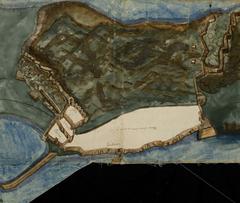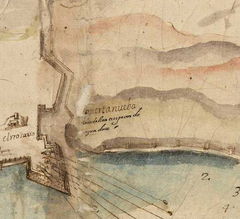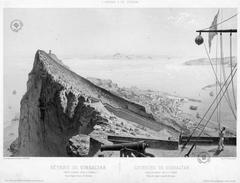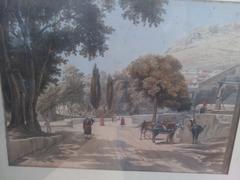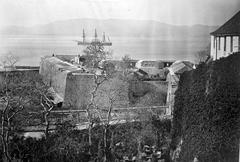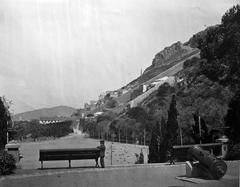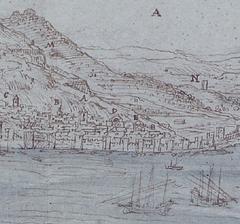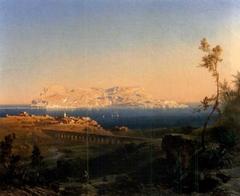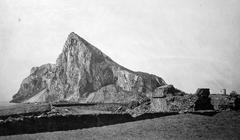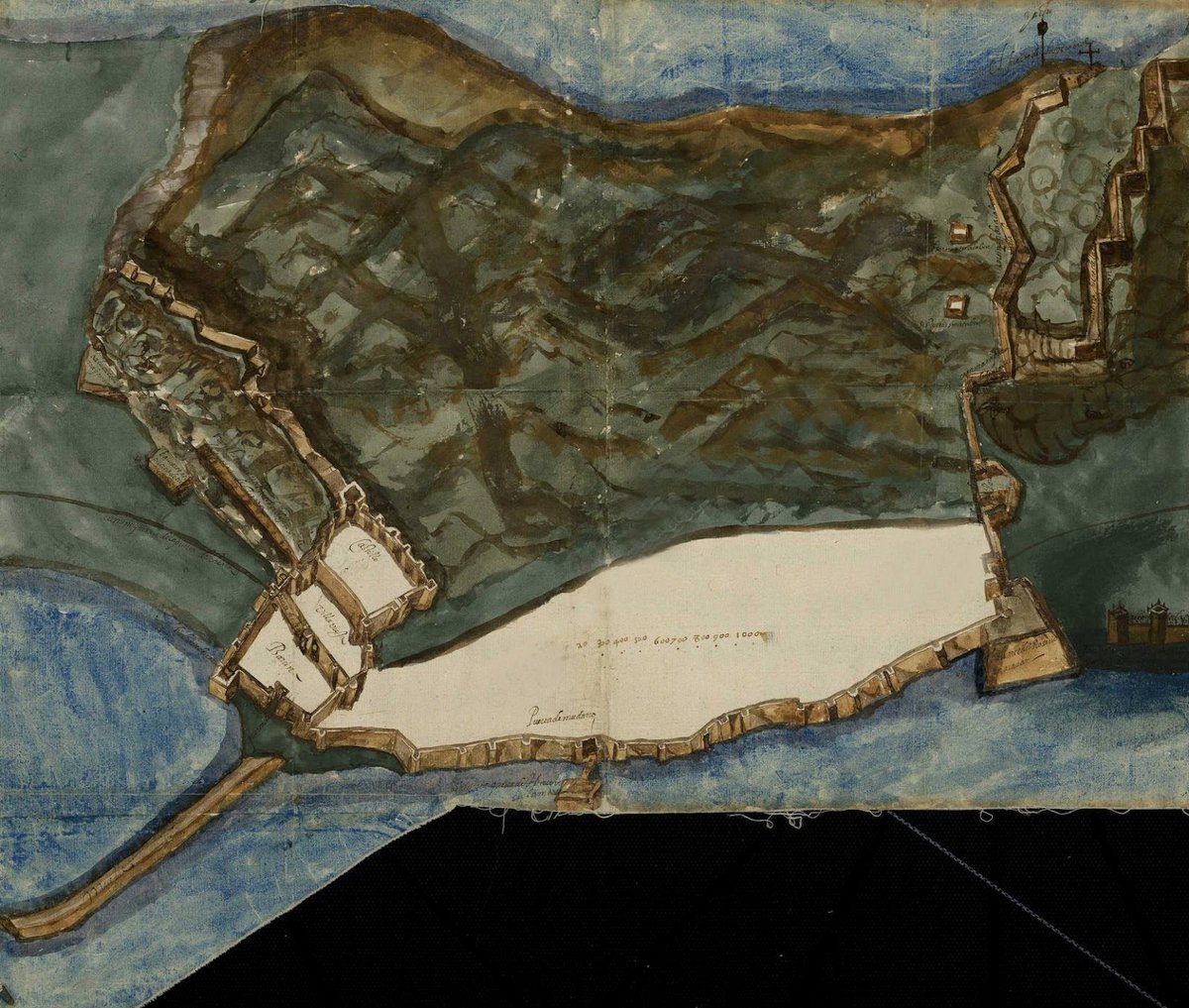
Complete Guide to Visiting Upper Rock - Gibraltar Nature Reserve, Algeciras, Spain
Date: 01/08/2024
Introduction
The Upper Rock - Gibraltar Nature Reserve, located in the heart of Gibraltar, is a remarkable blend of natural beauty, historical depth, and rich biodiversity. Established in 1993, the reserve was initially created to protect decommissioned military land and has since expanded to cover various unique ecosystems and historical landmarks (Wikipedia). The Rock of Gibraltar, rising 426 meters above sea level, is a prominent feature that dominates the landscape and offers breathtaking views. In addition to its natural allure, the reserve is steeped in military history, with sites like the Moorish Castle and the Great Siege Tunnels providing a fascinating glimpse into Gibraltar’s strategic past (Wikipedia). Visitors to the reserve can also enjoy its diverse flora and fauna, including over 600 species of flowering plants and the famous Barbary macaques, the only wild primates in Europe. The reserve is a critical resting point for migrating birds, further underscoring its ecological importance (Wikipedia). This comprehensive guide will provide you with all the essential information you need to plan your visit, from the history and geological significance to visitor tips and ticket information.
Table of Contents
- Introduction
- Establishment and Evolution
- Geological Significance
- Military History
- Biodiversity and Conservation
- Importance for Migratory Birds
- Climate and Environmental Conditions
- Visitor Experience and Accessibility
- Conservation Efforts and Challenges
- Cultural and Historical Significance
- FAQ
- Conclusion
Establishment and Evolution
The Upper Rock Nature Reserve, officially established in 1993, was part of an initiative to protect land decommissioned by the United Kingdom’s Ministry of Defence. The primary objective was to preserve the area’s wildlife, natural beauty, and historical sites while making them accessible to the public (Wikipedia).
In 2013, the reserve was expanded and renamed to reflect its broader scope beyond the Upper Rock. The protected area now includes the Great Gibraltar Sand Dune, Windmill Hill, and the Europa Foreshore (Wikipedia). This expansion was crucial in safeguarding more of Gibraltar’s unique ecosystems and historical landmarks.
Geological Significance
The Rock of Gibraltar, a prominent limestone promontory, is part of the Betic Cordillera, formed approximately 200 million years ago. Rising to a height of 426 meters (1,398 feet) above sea level, it is a significant geological feature that dominates the landscape of Gibraltar (Wikipedia). The Rock’s formation and its strategic location at the head of the Strait of Gibraltar have made it a landmark of both natural and historical importance.
Military History
The Upper Rock area has a rich military history, with several sites now open to the public. These include the Moorish Castle, Devil’s Gap Battery, Princess Anne’s Battery, World War II Tunnels, Great Siege Tunnels, and Charles V Wall (Wikipedia). These sites offer a glimpse into Gibraltar’s strategic military significance over the centuries, particularly during the Great Siege of Gibraltar (1779-1783).
Biodiversity and Conservation
The Gibraltar Nature Reserve is home to a diverse range of flora and fauna, many of which are protected by law. The reserve’s flora includes over 600 species of flowering plants, with distinctive species such as the Gibraltar candytuft, white Gibraltar chickweed, Gibraltar saxifrage, and Gibraltar thyme (Wikipedia). The reserve also supports a variety of trees, including the olive (Olea europea), carob (Ceratonia siliqua), and nettle trees (Celtis), which have been reintroduced to the area after many were felled during the Great Siege.
The fauna of the reserve is equally diverse, with notable species including the red fox, European rabbit, and mouse-eared bat. However, the most famous residents are the Barbary macaques, the only wild primate species in Europe. These macaques are a significant attraction and are found in various parts of the reserve, including the Ape’s Den and near the Great Siege Tunnels (Wikipedia).
Importance for Migratory Birds
The Rock of Gibraltar is a critical resting point for migrating birds. Its unique vegetation provides a temporary home for many species during their migration periods. The Rock has been identified as an Important Bird Area by BirdLife International because it serves as a migratory bottleneck for an estimated 250,000 raptors that cross the Strait annually. It also supports breeding populations of Barbary partridges and lesser kestrels (Wikipedia).
Climate and Environmental Conditions
Gibraltar has a typical Mediterranean climate, moderated by the sea that almost surrounds the peninsula. Summers are warm and dry, while winters are cool and wet. Temperatures range from 13.4 to 24.2°C (56.1 to 75.6°F), and annual rainfall is about 768 millimeters (30.2 inches) (Wikipedia). The Levanter clouds, formed when moisture-laden easterly winds are forced upward by the cliffs of Gibraltar, provide condensation that keeps the vegetation green even in the dry season.
Visitor Experience and Accessibility
The Gibraltar Nature Reserve is one of Gibraltar’s main tourist attractions, offering dramatic views of the surrounding area, including Spain across the Bay of Gibraltar and Jebel Musa of Morocco across the Strait of Gibraltar (Wikipedia). Visitors can reach the Upper Rock by road or the Gibraltar Cable Car, which starts next to the Gibraltar Botanic Gardens (Wikipedia).
Visiting Hours and Tickets
The Gibraltar Nature Reserve is open daily from 9:30 AM to 7:00 PM. Tickets can be purchased at the entrance or online through the official website. Prices vary depending on age and group size, so it is advisable to check the latest rates and discounts beforehand.
Travel Tips and Nearby Attractions
When planning your visit, consider wearing comfortable walking shoes and bringing water, especially during the warmer months. Nearby attractions include St. Michael’s Cave, known for its impressive stalagmites and stalactites, the City Under Siege Exhibition, and the World War II Tunnels (Gibraltar Travel).
Conservation Efforts and Challenges
The Gibraltar Nature Reserve is protected by law, and visitors are prohibited from taking anything from the park or picking flowers or other plants. This protection is crucial for preserving the unique biodiversity of the area (Gibraltar Travel). However, challenges remain, particularly with the Barbary macaques, some of which have become aggressive and dependent on food from humans due to past feeding by visitors. In 2008, the government ordered a cull of a group of macaques that had taken to scavenging in the town center (Wikipedia).
Cultural and Historical Significance
The Gibraltar Nature Reserve is not only a natural haven but also a site of immense cultural and historical significance. The presence of ancient fortifications, tunnels, and military installations provides a tangible link to Gibraltar’s storied past. The reserve’s strategic location has made it a focal point in various historical conflicts, and its preservation allows visitors to explore and appreciate this rich heritage (Wikipedia).
FAQ
Q: What are the Gibraltar Nature Reserve visiting hours? A: The reserve is open daily from 9:30 AM to 7:00 PM.
Q: How can I purchase tickets for the Gibraltar Nature Reserve? A: Tickets can be purchased at the entrance or online through the official website.
Q: Are there guided tours available? A: Yes, guided tours are available and can be booked in advance.
Q: What are the best spots for photography in the reserve? A: Some of the best spots include the Ape’s Den, St. Michael’s Cave, and the viewpoints offering panoramic views of the surrounding area.
Conclusion
The Upper Rock - Gibraltar Nature Reserve offers a unique blend of natural beauty, historical significance, and biodiversity. Its establishment and ongoing conservation efforts highlight the importance of preserving such areas for future generations. Visitors to the reserve can enjoy breathtaking views, explore historical sites, and experience the diverse flora and fauna that make this area so special. For more updates and travel information, download the Audiala mobile app and follow us on social media.
References
- Wikipedia, 2023, Gibraltar Nature Reserve
- Lonely Planet, 2023, Upper Rock Nature Reserve
- Gibraltar Travel, 2023, Upper Rock Nature Reserve
- April Every Day, 2023, Gibraltar Top of the Rock
